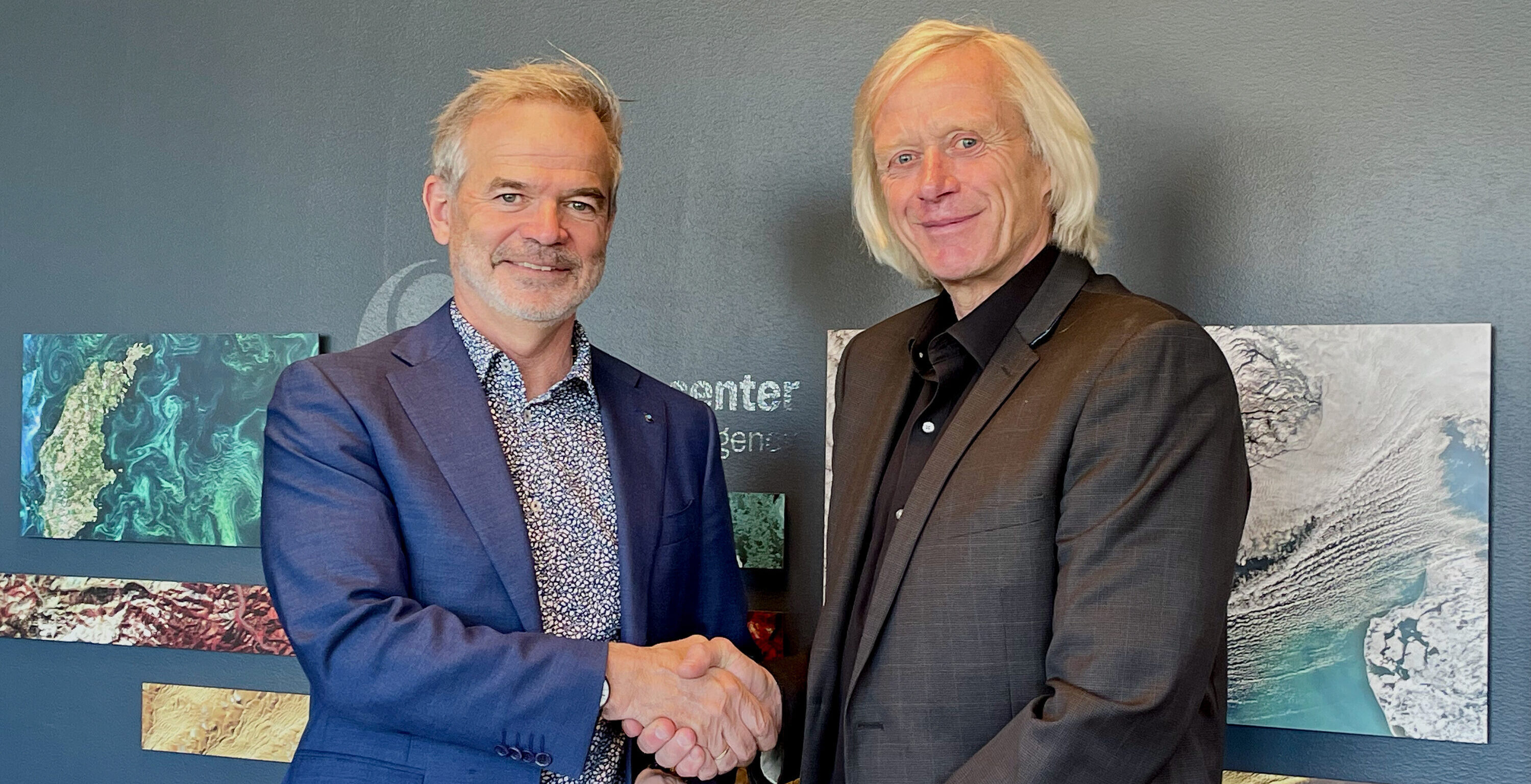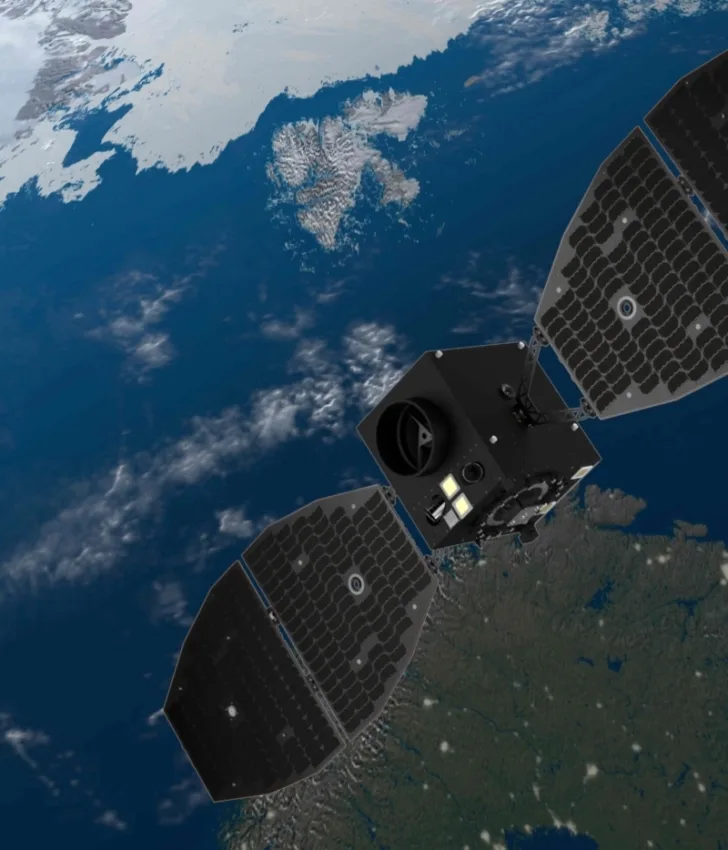The Norwegian Space Agency signed an agreement with KSAT for an Arctic ocean monitoring system.
The Norwegian Space Agency and Kongsberg Satellite Services (KSAT) have signed a letter of intent to develop a national ground segment as part of Arctic Ocean Surveillance (AOS), a groundbreaking satellite program that will strengthen Norway’s maritime monitoring in the Arctic.
Berit Ellingsen
June 5, 2025

Under the agreement, KSAT will establish a ground segment prepared to operate two satellites. This initiative is based on KSAT’s Platform for Nationally Controlled Satellites (PNKS), aimed at fulfilling Norway’s requirements for ground infrastructure supporting sovereign space missions and secure satellite operations. The agreement was signed in Oslo on 26 May 2025 and includes a total funding framework of 50 million NOK. The agreement was signed 26 May 2025.
The goal is to facilitate a common operational concept, enabling faster, more cost-effective, and higher-quality development of satellite ground segments—compared to setting up separate infrastructure for each satellite.
“With this agreement, Norway will establish the world’s first integrated system for satellite operation and control, data reception, processing, and analysis. This will significantly reduce the time it takes before satellite-based information becomes accessible,” said Rolf Skatteboe, CEO of KSAT. “The partnership with the Norwegian Space Agency is a key milestone in building a national ground segment that ensures rapid and reliable access to satellite data.”
“This is a significant step toward national control of Norwegian satellites,” said Christian Hauglie-Hanssen, Director General of the Norwegian Space Agency. “Control over ground systems and satellite operations is essential to ensure robustness in our national capabilities. Through collaboration with the Armed Forces, KSAT is already developing the PNKS concept, which now forms the basis for a unified national operations framework—including national encryption solutions being qualified through the AOS project.”
Arctic Surveillance Program
Arctic Ocean Surveillance is part of the Arctic Surveillance Program (ASP), a national collaboration between the Norwegian Coastal Administration, the Norwegian Armed Forces, the Norwegian Defence Research Establishment (FFI), and the Norwegian Space Agency. The program was formally established on 4 May 2023.
ASP aims to develop a comprehensive, satellite-based maritime surveillance system and a complete small satellite value chain in Norway. At its core, the program enables national and independent control over Arctic maritime observation—a critical capacity for sovereignty and environmental monitoring in northern waters.

Illustration of AOS-D.
Credit: EIDEL
The first two satellites in the AOS system—AOS-Demo (AOS-D) and AOS-Precursor (AOS-P)—will be developed with support from the European Space Agency (ESA), which will also fund up to one year of operational costs during their demonstration phase.
This marks the first time Norwegian space industry will handle the full satellite development lifecycle—from design and integration to launch and operation—within Norway.
The two first AOS satellites
In June 2024, EIDEL, based in Eidsvoll, signed a contract with ESA to build AOS-D. EIDEL serves as the prime contractor, and the satellite will test a new maritime surveillance payload provided by Space Norway under contract with the Norwegian Space Agency.
In November 2024, Kongsberg Defence & Aerospace entered a contract with ESA to develop AOS-P, equipped with a Navigation Radar Detector, similar to that used on NorSat-3.
Both satellites will carry AIS payloads to detect vessels broadcasting AIS signals, and RF payloads to detect vessels that have switched their AIS off. The AIS (Automatic Identification System) reveals a ship's identity, speed, and course, forming a key part of maritime situational awareness.
On 12 March 2025, the Norwegian Space Agency signed a launch agreement with Isar Aerospace for both satellites. The launch is scheduled to take place from Andøya Spaceport—Norway’s first orbital launch facility—using a Spectrum rocket by 2028.
Andøya Spaceport, officially opened in 2023, was established to facilitate commercial satellite launches from Norwegian soil. The German company Isar Aerospace is currently preparing for its second launch from the site.